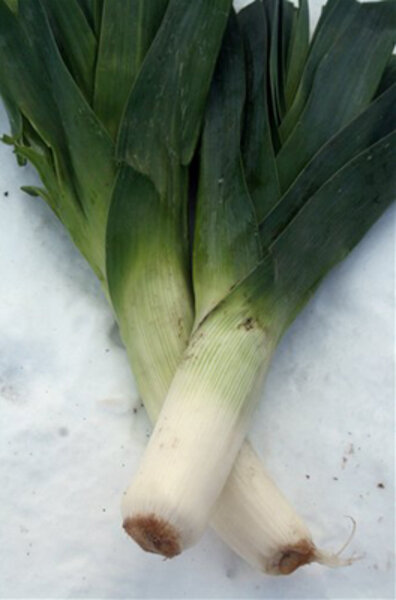Easy to grow and useful in the kitchen
Loading...
Let's suppose that you don't have much time for vegetable gardening, and precious little space, yet you want to enjoy a healthy, easy-to-grow mix of recipe-driven essentials.
That suggests a starter set of hardy alliums, primarily leeks, garlic, shallots, and chives.
These are lesser-known but upscale relatives of the ordinary bulb onion. They can be pricey when bought ready-to-eat from supermarket produce shelves, but come cheap if you can find them as seeds, transplants or sets (small bulbs).
A couple of cautions, however:
First, they take time to mature, which means they must be planted early. If you're a cold-climate gardener with a fondness for seeds, that means March, April, or as soon as the soil can be worked. Some leek varieties, for example, need 120 days or more before becoming kitchen ready.
"The key is to get them (seeds) in so they're producing enough root tissue prior to bulbing," says Vincent Fritz, an extension vegetable specialist with the University of Minnesota's Southern Research and Outreach Center at Waseca. "Sets are more appropriate for gardeners who swing into action later in the season."
Another problem is availability, particularly with leeks and shallots.
"Not many big commercial growers raise them, although more and more are beginning to try," says Stan Cope, president of Bonnie Plants, in Union Springs, Ala., the largest producer of vegetable and herb plants in America with 85 growing and distribution centers. "We're into our second year offering leek (as seedlings)."
This flexible foursome is well worth the effort if you like trying new flavors and coaxing tantalizing odors from recipes. Leeks, garlic, shallots and chives can be used in everything from soups to salads, stews to stir-fry, oils to breads.
They can be enjoyed raw, baked, barbecued, boiled, broiled, canned, creamed, dehydrated, fried, deep-fried, pickled, and steamed.
Shallots and leeks add an oniony essence to foods but without the punch many onions deliver. Chives are great as garnish or a last-minute flavoring. And who among us can stir up some spaghetti sauce without finding pleasure in the house-filling aroma and sharp, sugary taste of garlic?
Alliums also are nutrient rich, full of vitamins, proteins, carbohydrates, minerals, dietary fiber, and enzymes.
Allowing the plants to "bolt" or produce flower stalks can adversely alter their flavor. "It can change the taste and texture of the bulbs because so much of their energy is going toward the reproductive phase," Mr. Fritz says.
Most alliums grow best in full sun, when watered regularly, and when fed in well-drained soils with a blend of 10-10-10 fertilizer. They're also attractive in containers and don't require as much shoulder room as vine crops. All perform well from Zones 3 through 9.
Taken individually:
— Shallots resemble garlic, with heads divided into multiple cloves rather than single bulbs like onions. They can be eaten young (60 days) as you would green onions, or later, like garlic, after the tops die back and the bulbs dry. Their flavor is described as a mild blend of sweet onions and garlic.
— Leeks have the look of green onions, except the stems are cylindrical rather than rounded. They can be eaten when the shoots reach the size of a ball point pen, but they'll grow much larger if thinned. The green or topmost portion of the plant is bitter and generally discarded.
— Chives are called herbs but more accurately are small onions. Unlike other flavoring alliums, chives are valued more for their cylindrical green leaves than their bulbs. The violet-colored blooms they produce make standout garden borders, or can be used for dressing up dishes.
— Garlic generally is planted in autumn and isn't harvested until midsummer. It matures into clusters of tender cloves with paper-like wrappings. Bulbs can keep six to eight months when stored in a cool, dry place.
-----
To read more about gardening, see the Monitor's main gardening page and our lively gardening blog, Diggin' It. Both of these have new URLs, so we hope you'll bookmark them and return. Want to be notified when there's something new in our gardening section? Sign up for our RSS feed.






